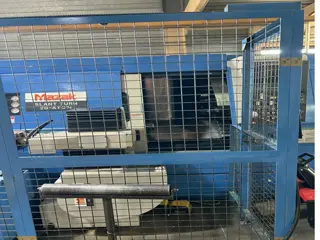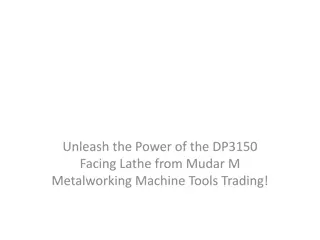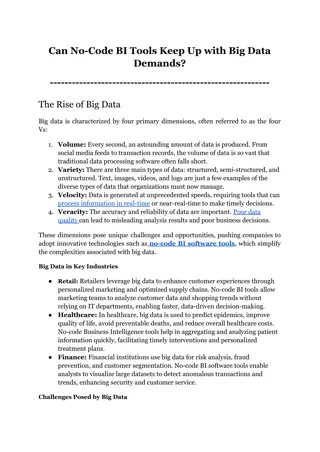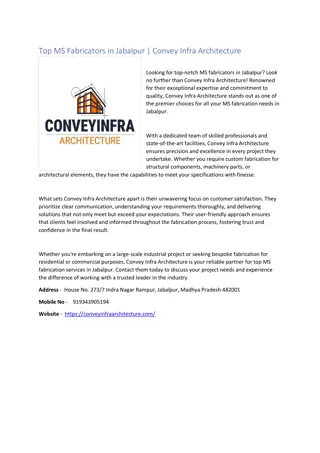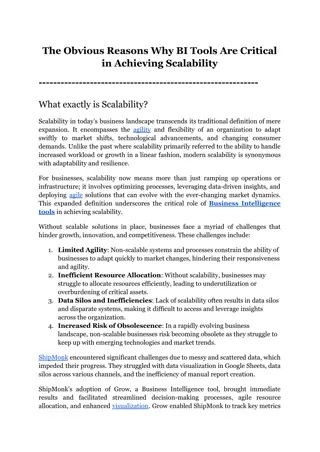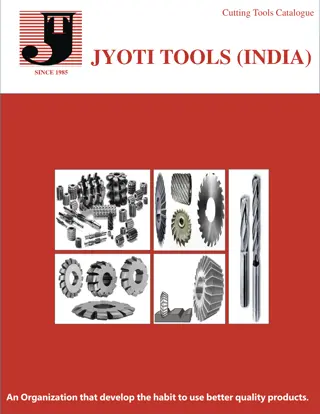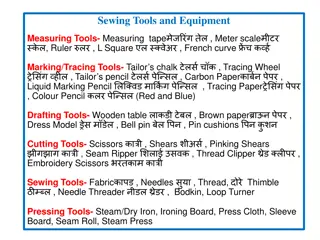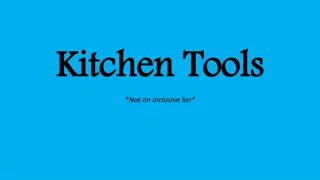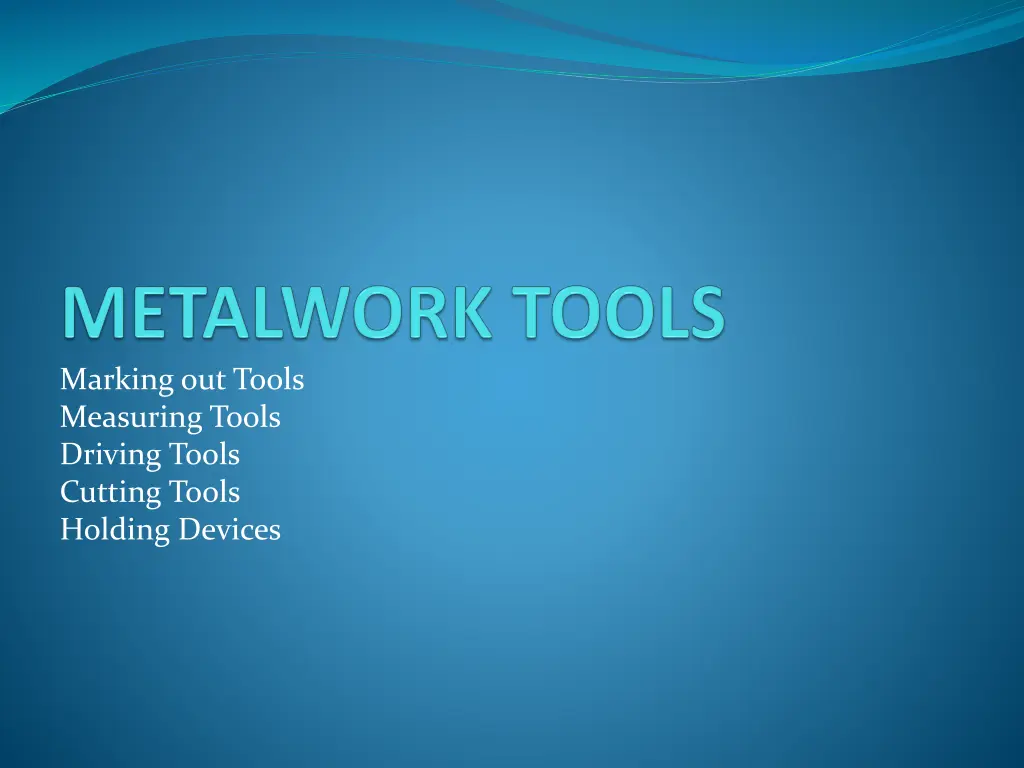
Metalworking Tools: Marking, Measuring, Cutting, Driving
Discover essential metalworking tools including marking tools for accuracy, measuring tools for precision, cutting tools for shaping materials, and driving tools for assembly. Explore their uses and types.
Download Presentation

Please find below an Image/Link to download the presentation.
The content on the website is provided AS IS for your information and personal use only. It may not be sold, licensed, or shared on other websites without obtaining consent from the author. If you encounter any issues during the download, it is possible that the publisher has removed the file from their server.
You are allowed to download the files provided on this website for personal or commercial use, subject to the condition that they are used lawfully. All files are the property of their respective owners.
The content on the website is provided AS IS for your information and personal use only. It may not be sold, licensed, or shared on other websites without obtaining consent from the author.
E N D
Presentation Transcript
Marking out Tools Measuring Tools Driving Tools Cutting Tools Holding Devices
Marking out Tools Marking out tools are hand tools used for marking lines on metal surface, checking alignment, indicating points/positions on a workpiece. Some of the marking out tools are surface plate, surface table, scriber, odd-leg callipers, dividers, punches and try square Surface plate: it is made of cast iron, it is used for testing flatness of surfaces. Surface table: it is made of cast iron, it is used for supporting bigger workpiece and for checking flatness of bigger workpiece for marking out purposes.
Measuring Tools They are those tools used for measuring lengths, widths, thickness or sizes of metal Some of the measuring tools are steel rule, callipers, combination sets, micrometer, verniercallipers, depth gauge and height gauge. Steel rule: it is made of carbon steel/stainless steel. It is the commonest measuring instrument calibrated in millimetre and centimetre Callipers: they are used for measuring diameters, widths and thickness. They include external, internal and odd-leg callipers. Micrometer: it is used for precision measurements. It consists of spindle, thimble and barrel.
Cutting Tools They are tools used for cutting materials by sawing, filling, chiselling or scraping. Some of the common metalwork cutting tools are hacksaw, file, chisel and scrapper. Hacksaw: it is used for cutting metals. The three types of hacksaw are adjustable, tubular and junior hacksaw. The two types of hacksaw blade are flexible and all-hard blade. Files: they are made from high carbon steel, and are used for finishing jobs to the required sizes and shapes after they have been previously cut using chisel or hacksaw. Some of the types of files are flat, hand, round, half-round, triangular, knife-edge and square file.
Driving Tools These are tools used for moving objects into metals through hammering, punching or screwdriving. Some of the commonly used driving tools are hammers, screwdriver and punch. Hammers: they consist of the head and the handle. They are used for delivering blows on a workpiece, some of the types of hammer are ball pein, cross pein, straight pein and mallet. Punches: they are used for punching holes on metals, driving out rivet/pin/dowels from holes. The three main types of punches are pin, round, square punches.
Holding Devices They are used to firmly secure workpiece at a fixed position when working with metals. They include bench vice, hand vice, machine vice, pliers and G-clamp. Vices: they are used for holding objects rigidly in position so that desired operations can be carried out. Some types of vices are bench, machine, hand and leg vice. Clamps: they are used for holding workpiece for various jobs. The three main types of clamps are pliers(long nose, round nose, flat nose, combination pliers), toolmaker s clamp and G-clamp




